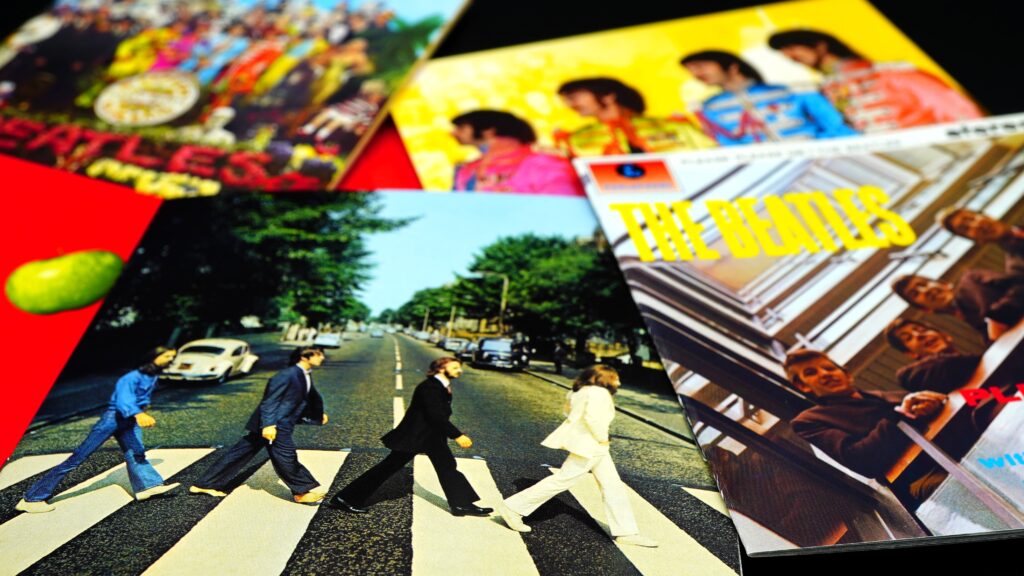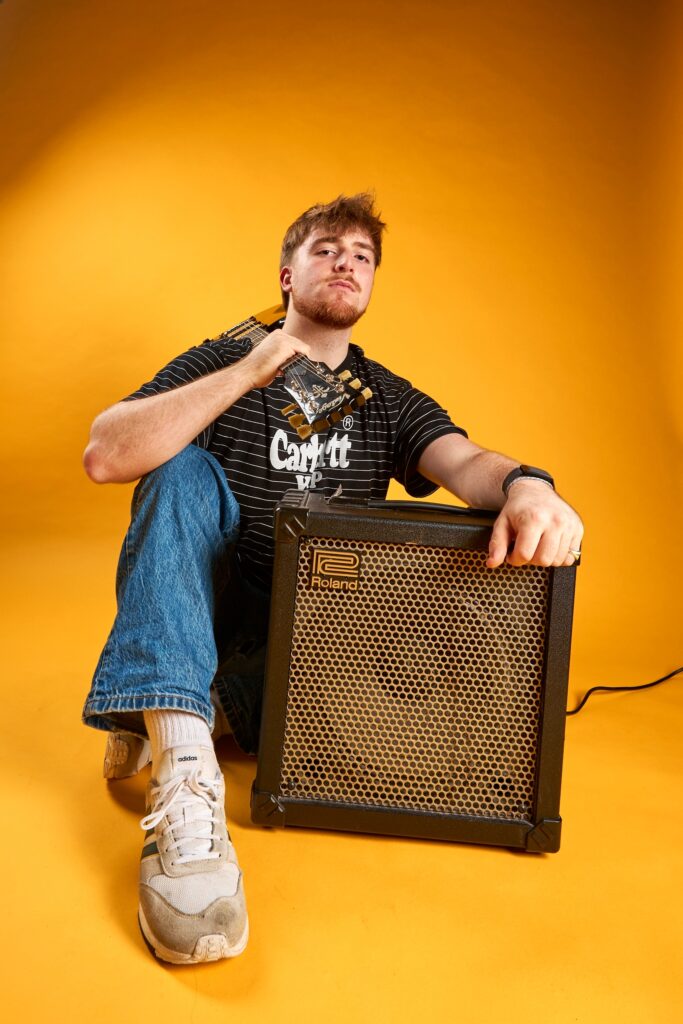The Sounds of Rebellion, Reinvention, and Global Influence

By: Žikica Milošević
The British are unmatched in popular culture, which has a touch of high culture and refined taste. Their films, iconic TV series, and pop music have permanently changed the world and all of us in it, leaving an indelible mark on people far beyond Britain’s shores.
How Elvis Became Prometheus, and Hamburg Saved Britain
It all began in the southern United States, where African Americans played the blues and, in the early 20th century, created new forms of guitar music that later evolved into rock and roll. Just as Prometheus stole fire from the gods and gave it to humanity, Elvis Presley took “black” music, adapted it to a white audience and his own sensibility, and – rock and roll became a global phenomenon!
Enthralled by the wealth of an unscathed America and a language they already spoke, Britain immediately embraced rock and roll. However, much of it was merely derivative, largely consisting of covers of American melodies. This wasn’t enough to conquer Europe, let alone the world. Europe was singing French chansons and Italian canzoni at the time, and listening to Sanremo was a major cultural event across the continent. Europe was much smaller in an artistic sense than today – Turkey, Greece, Spain, and Portugal were under military juntas or rigid, closed regimes, while the Eastern Bloc lived in its own world.
Then, an obscure five-piece band from Liverpool travelled to Hamburg and returned as a four-piece, transformed by their experience and reshaping global music under the influence of German existentialists.
Of course, that band was The Beatles. When they first arrived in Hamburg, they wore glittery jackets, styled their hair like Elvis, and performed covers of American hits. But their fifth member, Stuart Sutcliffe, met the German beauty and photographer Astrid Kirchherr, who moved in existentialist circles. They dressed in blazers, black turtlenecks, or white shirts and swept their hair over their foreheads. A new aesthetic was born – the defining look of 1960s Britain – and a new sound. Sutcliffe devoted himself to painting, and The Beatles remained the greatest band of all time, spawning an entire pantheon of British stars unlike anything the world had seen before.
They conquered America, triggering what the American press called the First British Invasion – infectious melodies, sharp suits, the image of sophisticated charmers… The counterculture was born, and the world moved away from chansons and canzoni as everyone began imitating Britain and the British. The Rolling Stones, Gerry and the Pacemakers, The Who, The Kinks, The Animals… The world went mad. Teenagers, unwilling to live in the same world as their parents after the horrors of World War II, changed everything. Even the USSR and Yugoslavia, where records were smuggled or pressed onto X-ray scans, weren’t immune to the revolution.
The Beatles remained the greatest band of all time, spawning an entire pantheon of British stars unlike anything the world had seen before
The Enchanting Bowie and the Wild Seventies
When the director of A Knight’s Tale was asked why he used 1970s music in a film set just before the discovery of America in 1470, he replied: “The ’70s are the ’70s in every century!” After the decline of the hippie movement in the early ’70s and its descent into drugs (the near-simultaneous deaths of Jimi Hendrix, Jim Morrison, and Janis Joplin marked its tragic end), the post-hippie generation turned to flamboyant hedonism and experimentation. Suddenly, another taboo was shattered – flirting with bisexuality became fashionable, as did a feminised image: long hair, makeup, and high heels.
David Bowie, the greatest figure in popular music history (not for the number of No. 1 hits or records sold, but for his sheer innovation), created personas that he fully embodied – Ziggy Stardust, Aladdin Sane, the Thin White Duke… Queen won hearts with their melodies, while T. Rex did the same with their music androgynous style – feather boas, eyeliner, and glitter. Elton John dazzled with ever-changing glasses and flamboyant suits at the piano.
The sexual revolution was in full swing – AIDS was not even on the horizon – and once again, the world danced to Britain’s rhythm, now more colourful than ever. Everyone imitated them – look at Bijelo Dugme in that era! Prog rock introduced epic, 25-minute-long songs and intellectual depth, while hard rock took off, with bands like Led Zeppelin filling stadiums with intricate ballads and electrifying guitar riffs.
And then came punk. Almost out of nowhere, in 1976, a group of angry, working-class youth emerged from Sex, a boutique run by Malcolm McLaren and designer Vivienne Westwood. They wanted nothing to do with flamboyance and glamour – they were raw, rebellious, and broke. Their songs were furious, unpolished, and barely lasted two minutes. None of them pretended to be skilled musicians, nor did they care.
Ironically, while the British press—already accustomed to Bowie’s makeup but allergic to working-class rebellion—dismissed punk as “filthy lucre,” punk conquered the world. It burned fast, but in its ashes, it gave birth to a new movement still considered one of the greatest in music history. And that was…

The Second British Invasion
New Wave! Punk lived by the mantra “live fast, die young”; true to its word, it burned out quickly, destroying everything in its path but lacking a clear vision for what came next—like all revolutions. However, its more polished successor, soon known as New Wave, retained punk’s raw energy in a more refined, intellectual, and accessible form, making it more appealing to a broader audience.
This was the dawn of the Second British Invasion, a movement with surprisingly fascinating origins. It coincided with two significant historical and technological shifts. The first was the rise of cable television in the United States at the beginning of the decade, and the second was that by 1979, most households had colour televisions. But what’s the point of having a colour TV if the programmes remain dull and muted? Viewers craved something vibrant and flashy, while cable networks struggled to fill their airtime.
Enter MTV, launched on 1 August 1981, a channel dedicated to Music Television. The problem? The American music industry had ignored music videos mainly. Old-school rockers saw them as unnecessary, and most US hits had no accompanying videos—those that did were often just concert footage. As a result, when MTV launched, it had no choice but to air a huge number of British New Wave music videos.
The first video ever broadcast on MTV in the US was the 1979 Buggles hit Video Killed the Radio Star. To the music industry’s surprise, record sales for artists featured on MTV skyrocketed as listeners started calling up radio stations demanding to hear those same songs. And the videos? They were vivid, extravagant, and dripping with style. Duran Duran led the charge with their exotic, cinematic videos for Rio, Save a Prayer, and Hungry Like the Wolf, filmed in Sri Lanka and Antigua. They became both style and music icons, influencing an entire generation. At the same time, darker, more alternative movements emerged from unexpected corners of Britain. The Smiths, Joy Division, The Jesus and Mary Chain, The Cure, and the entire goth subculture created some of the most influential cult bands in history—shaping entire new musical genres, almost by accident.
Meanwhile, the British press masterfully fuelled rivalries with its signature dichotomy approach, setting up dramatic musical face-offs: The Beatles vs. The Rolling Stones, The Stone Roses vs. The Happy Mondays, and Oasis vs. Blur. So, again, Britain led the world in music, fashion, and culture—as it always had.
Perhaps the biggest ‘British-sounding’ hits are no longer made by British artists, but they still sound unmistakably British
Britpop: The New New Wave
Just as Americans were recovering from the shock of the Second British Invasion, they struck back in the late ’80s with bands like Guns N’ Roses, Bon Jovi, and Nirvana. But Britain had its own counterattack brewing quietly, with the rise of shoegaze, then with bands like The House of Love, The Stone Roses, and The Happy Mondays.
And then, in 1993, the madness called Britpop began. A catch-all term for a fresh wave of British music, Britpop was led by Suede, Oasis, Blur, and Pulp—each unique yet unmistakably British, but the times had changed. The world now had its own favourite genres. In 1984, Duran Duran was the biggest band simultaneously in Germany, Yugoslavia, Italy, and Britain. But by 1994, British music didn’t travel quite as far. Americans were deep into R&B and hip-hop, Europe was dancing to Eurodance, and East Asia was quietly building what would soon become the world’s biggest cultural phenomenon—J-Pop and K-Pop. Yet, the influence of Britpop was still enormous.
From 2003 to 2013, the biggest musical trend was the indie revival, led by British acts like Franz Ferdinand, The Ting Tings, and Editors. But something strange happened—the biggest bands of this era weren’t British, but American bands that sounded British.
When The Killers, The Strokes, and Interpol emerged, many were surprised to learn they were American. And this, in itself, is proof of Britain’s musical dominance—by then, the seeds sown by British music had taken root worldwide, perhaps even surpassing the original source. That’s the highest compliment possible.
Even today, when you hear The Weeknd (Canada) or Rosé (New Zealand/Australia/Korea), whose duet with Bruno Mars (Apt.) is one of the catchiest hits in years, it’s clear they grew up on ’80s British music and the indie revival.
Perhaps the biggest “British-sounding” hits are no longer made by British artists. But they still sound unmistakably British. And that is the greatest testament to the influence of this small island nation—an undisputed musical superpower.